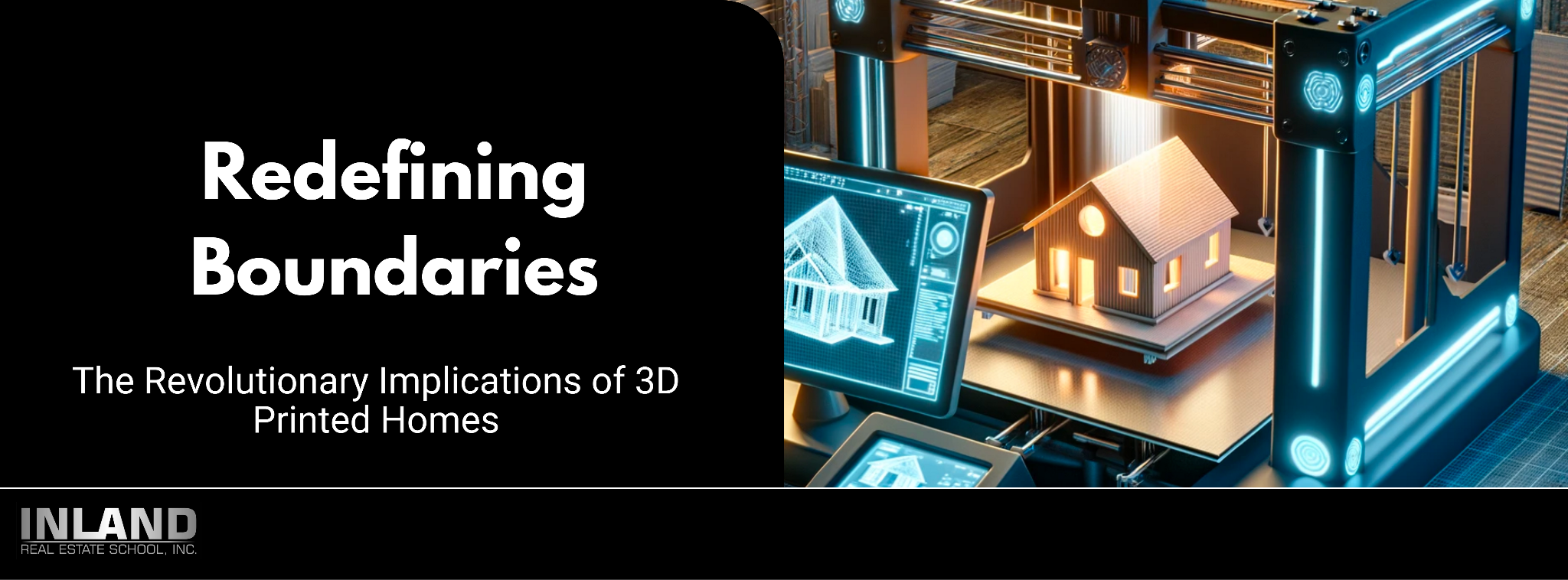
Redefining Boundaries: Understanding the Impact of 3D Printed Homes on Construction and Real Estate
Introduction: The Dawn of a New Era in Construction
As technology continues to reshape the world, the construction industry is not immune to its transformative power. One technology, in particular, stands out for its potential to revolutionize how we build homes: 3D printing. By marrying the possibilities of digital design with physical manufacturing, 3D printing, or additive manufacturing, is paving the way for a new age of construction that promises greater efficiency, sustainability, and affordability.
The Technology: Understanding the 3D Printing Process
3D printing is a process that creates three-dimensional objects from digital models by layering material. In the context of home construction, the "printer" is typically a large, crane-like machine that extrudes a specially formulated concrete, which hardens upon exposure to air. This machine follows a digital blueprint to construct a home layer by layer, shaping walls, roofs, and interiors with incredible precision. The technology provides an unprecedented degree of control over the construction process, opening up new design possibilities and efficiencies.
In Practice: Current Applications and Examples
3D printing in home construction has moved beyond the realm of the theoretical into practical application. In Austin, Texas, construction technology company ICON has built an entire community of 3D-printed houses, creating an affordable and sustainable housing solution for a growing population. Similarly, SQ4D, a New York-based 3D printing construction company, listed the first-ever 3D printed home for sale in the United States in 2021, demonstrating the technology's commercial viability.
Benefits: A Fresh Take on Affordability, Sustainability, and Customization
The use of 3D printing in home construction comes with numerous benefits. Chief among them is affordability: the technology can significantly reduce the cost of building a home by reducing the need for labor and minimizing waste. This means cheaper homes and more affordable housing options, especially in areas with high living costs.
In addition, the precision of 3D printing helps conserve resources and reduce the environmental footprint of construction. The printer uses just the right amount of material needed for each part of the building, minimizing excess. The potential to use eco-friendly materials like recycled plastic or bio-concrete further boosts the sustainability quotient.
Lastly, 3D printing allows for high levels of customization. Unlike traditional construction methods, which can be limited by manual labor and standard material sizes, 3D printers can create complex shapes and structures, enabling unique architectural designs for every individual home.
Challenges: Legal Hurdles, Workforce Concerns, and Technological Limitations
Despite the potential advantages, the widespread adoption of 3D printing in construction faces numerous challenges. For one, existing regulations, zoning laws, and building codes were not designed with 3D printing in mind, creating potential legal and bureaucratic roadblocks.
Moreover, while reducing labor costs is seen as a benefit, it also raises concerns about job displacement within the construction industry. Unions, workers, and policymakers will need to navigate the changing employment landscape.
From a technical standpoint, while significant progress has been made, 3D printing technology still needs further refinement and development to handle larger and more complex projects. It also needs to prove its durability and reliability over time to gain wider acceptance.
The Future: Implications for the Construction and Real Estate Industry
The evolution of 3D printing technology is likely to have far-reaching implications for both the construction and real estate industries. By bringing down the costs of construction and offering enhanced customization, it could democratize access to housing and disrupt traditional real estate models. For the construction industry, the shift to 3D printing could herald a move towards more localized, on-demand production, reducing the need for extensive supply chains.
Conclusion: Towards a Future Shaped by 3D Printed Homes
While 3D-printed homes are still in their nascent stages, the transformative potential they hold for the construction and real estate industries is undeniable. By offering a pathway towards more affordable, sustainable, and customized homes, this technology could redefine our very conception of homebuilding. With the ongoing development and refinement of 3D printing techniques, we are indeed at the cusp of a new era in construction.
If you found our blog post insightful and you're inspired to dive deeper into the real estate industry, we invite you to explore Inland Real Estate School. With over 25 programs and a proud legacy of serving more than 12,000 students, we are an established, fully licensed Real Estate School in Illinois.
We offer a multitude of learning modes - on-ground classes (live in person or live webinar), home-study, or online (computer-based reading) real estate classes for people who want to get started in the real estate world and want to become real estate brokers, managing brokers, or seek post-license and continuing education throughout the state of Illinois and nationwide online.
Additionally, we have partnerships with schools that provide nationwide education for mortgage brokers and appraisers. We also have affiliations with institutes that can assist you in securing licensing in additional states.
Whether you're a new real estate broker aiming to create your own identity or a seasoned professional looking to upgrade your skills, at Inland Real Estate School, we're committed to investing 110% in you.
References
Footnotes
Khoshnevis, B. (2016). '3D Printing: An Emerging Disruptive Technology', IEEE Transactions on Emerging Topics in Computing. ↩
Gibson, I., Rosen, D. W., & Stucker, B. (2015). 'Additive Manufacturing Technologies: 3D Printing, Rapid Prototyping, and Direct Digital Manufacturing'. ↩
ICON (2021). 'Icon prints a neighborhood of 3D-printed houses', ICON. ↩
SQ4D (2021). ' ↩
WE OFFER OVER
25+
PROGRAMS
WE HAVE SERVED
12000+
STUDENTS
VETERAN STAFF
40+ Years
INDUSTRY EXPERIENCE
PROUDLY PROVIDING
23+ Years
OF EDUCATION
INLAND REAL ESTATE SCHOOL, INC. SUPPORTS

Campus Visiting Hours by appointment only:
1st-18th each month AM times, M-F
19th-end of the month PM times, M-F
Visiting hours need to be scheduled in advance
OAK BROOK, ILLINOIS 60523. © INLAND REAL ESTATE SCHOOL, INC. A PROFESSIONAL STUDIES INSTITUTE, INC. COMPANY, 2010. ALL RIGHTS RESERVED.
NOT AFFILIATED WITH THE INLAND REAL ESTATE GROUP OF COMPANIES, INC. THE INLAND NAME IS USED UNDER LICENSE. Privacy Policy







